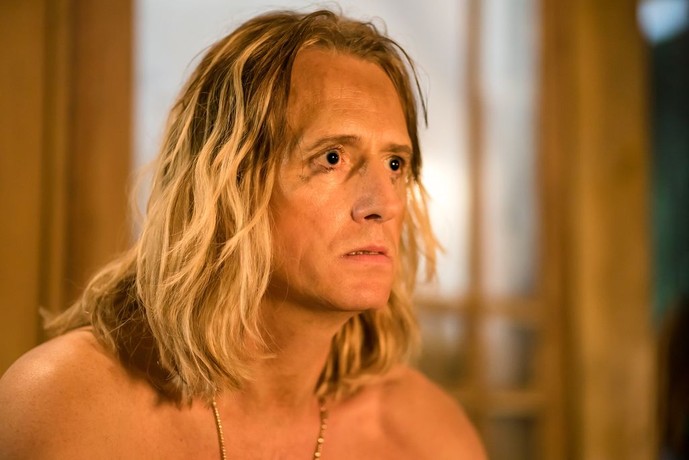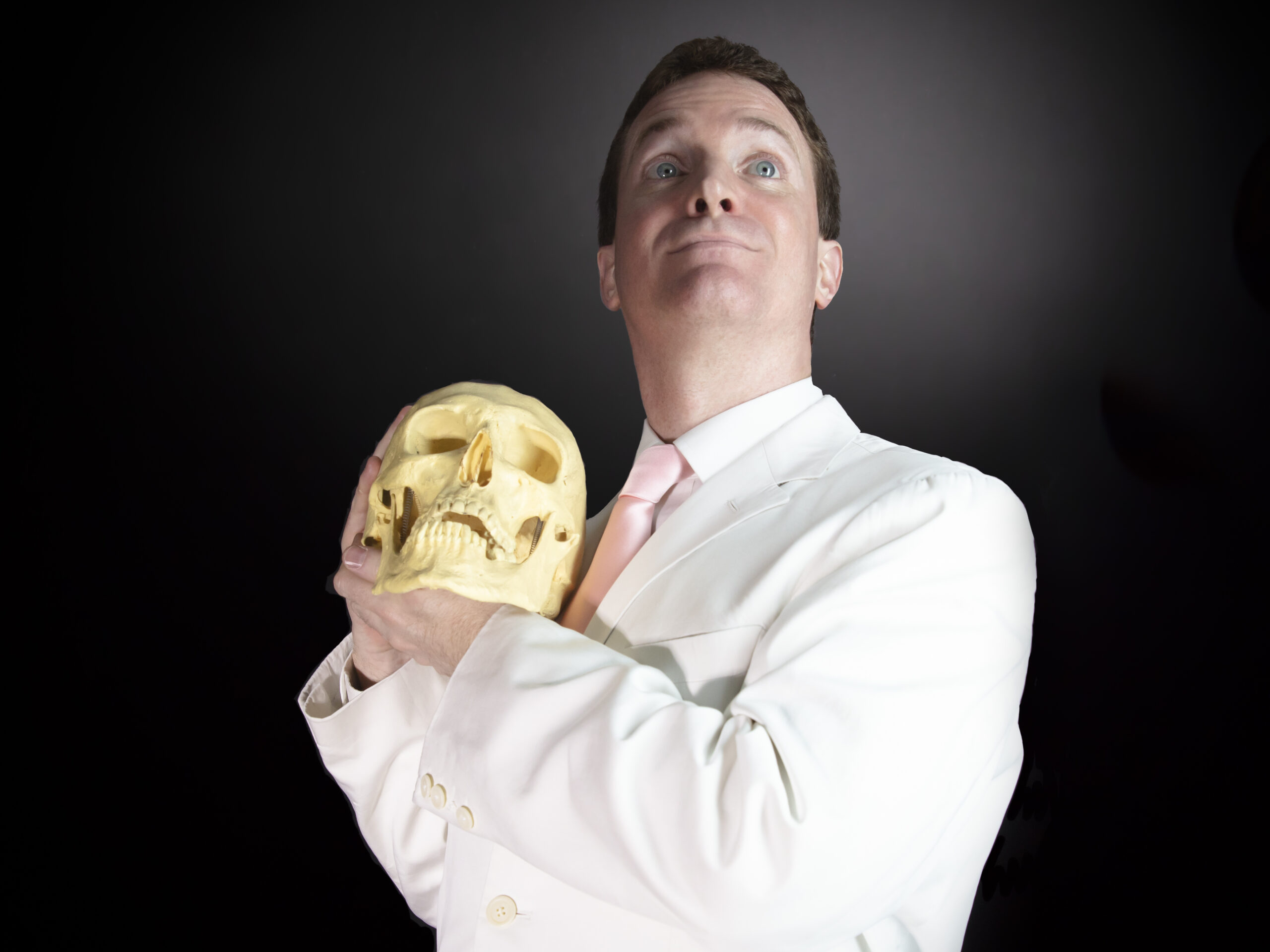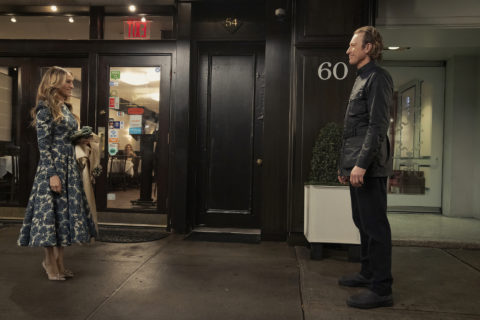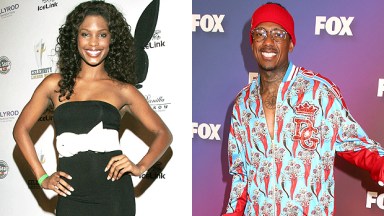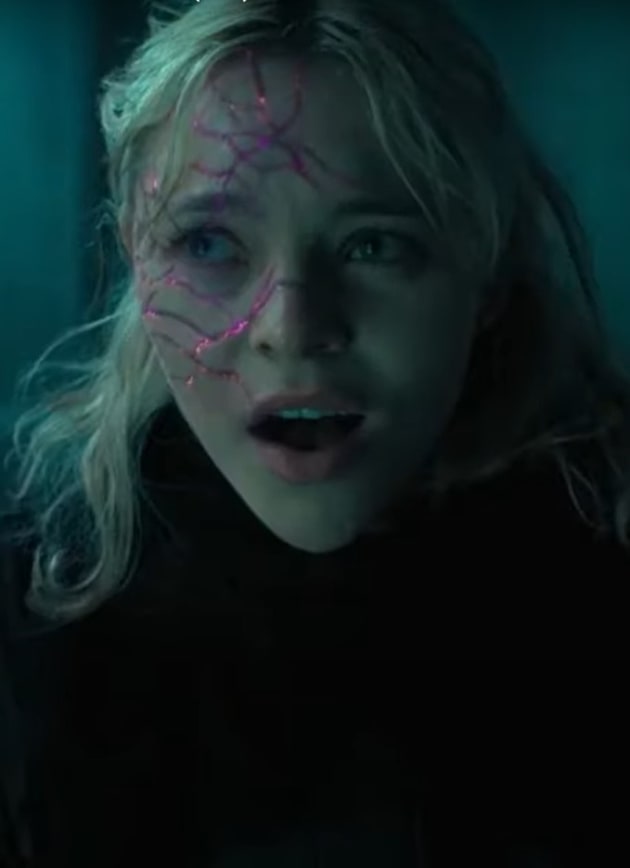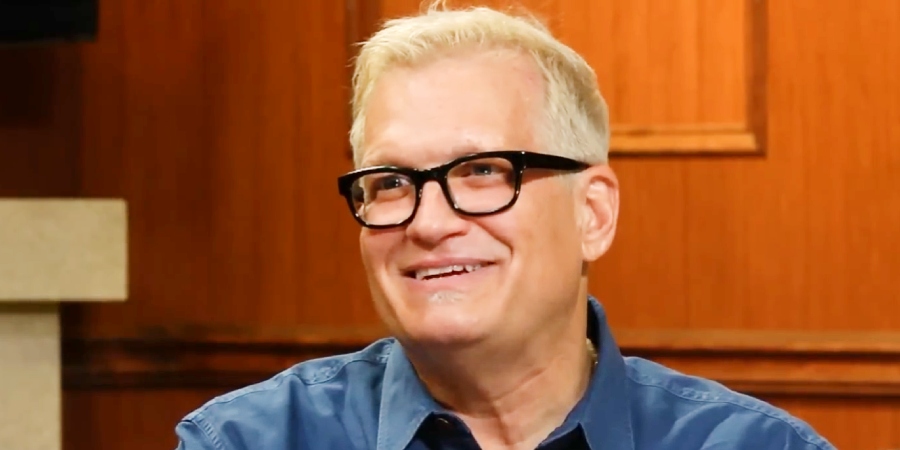Right after I saw Caligula: The Ultimate Cut, I had to rewatch the original 1979 movie.
It’s a fairly remarkable thing. Although The Ultimate Cut is essentially a scene-by-scene duplicate of the ‘79 film, both movies feel completely different. The story and even the image on the screen may be the same, but the tone — the attitude, the atmosphere, the aura — are practically opposite.
Whether this is a good thing or a bad thing is going to vary from viewer to viewer.
Here’s what The Ultimate Cut has to offer
If you’re among those who wrote off the ‘79 film as laughable, overwrought kitsch and/or sleazy X-rated filth, The Ultimate Cut certainly has you in mind. It’s roughly 20 minutes longer than the notorious Bob Guccione cut from almost 45 years ago and excises almost all of the hardcore unsimulated sexual content. Some scenes are longer, some scenes are shortened and lead actor Malcolm McDowell has considerably more screen time than in the original theatrical release. Structurally, the story itself isn’t dramatically altered, but cosmetically, The Ultimate Cut isn’t even the same movie — literally.
The individuals behind The Ultimate Cut pilfered through hours and hours of raw footage and more or less made an all new film from the plethora of unused and alternate takes. The IMDb page for The Ultimate Cut — I’ll leave it up to you to determine the trustworthiness of the site in question — boasts that not a single frame from the original ‘79 release was used in this restored, remastered and effectively remixed version. The film’s original soundtrack has been replaced and what was once deemed unusable dialogue has been cleaned up and reinserted into the picture through newfangled audio technology. Some additional digital effects were tossed in for certain scenes and the opening and closing credits have been totally redesigned as well.
The marketing materials for The Ultimate Cut describe it as a “reconfiguration” of the notorious cult classic. Which, naturally, begs the question: is that “reconfiguration” actually an improvement … or was an “improvement” of Caligula even needed in the first place?
A history lesson
Caligula is a film with many fathers — and none of them want to take credit for its birth.
The script was penned by Gore Vidal, one of the most prolific political drama writers of the 1970s. The film itself was directed by Tinto Brass, a veteran Italian auteur who could rightly be considered the exploitation cinema counterpart to Federico Fellini. And the production was bankrolled by the aforementioned Guccione — better known to the world at large as the head honcho behind Penthouse magazine. All three men expressed disappointment, if not outright fury, over the final product. Vidal said Brass bastardized his script, Brass said Guccione ruined his directorial vision and Bob was beset with obscenity trials, actress lawsuits and the unenviable challenge of convincing mainstream theaters to carry a film depicting real acts of oral sex and penetration.
The critical reaction to the film was savage, with commentators like Roger Ebert assailing Caligula as irredeemable garbage. Although disowned by some of its own stars, Caligula nonetheless turned a profit and performed well financially all over the globe. The film would find an even larger — and more appreciative — audience when it later made the rounds on VHS and premium cable airings. It would soon join controversial movies like Last Tango In Paris, In The Realm of The Senses and Salo in the pantheon of transgressive arthouse classics. To this day, there seems to be no in-between; Caligula is either revered or reviled, celebrated or condemned, deified or denigrated.
The historical accuracy of the movie seems a mere aside (keep in mind, the “common knowledge” of Caligula today is largely culled from the writings of Suetonius, who was pretty much ancient Rome’s version of The National Enquirer). Instead, the film is — rightly or wrongly — mostly remembered for pushing the boundaries of sex and violence in cinema. There really isn’t a single sexual taboo that isn’t shattered over the course of Caligula, and that’s to say nothing of the wanton bloodshed and gore. Oddly enough, the film is rarely noted for its prescience. Filled to the brim with incest, torture, nonstop betrayal and rampant beheadings, Caligula didn’t just pave the way for fare like Game of Thrones, it pretty much put up all the road signage decades in advance.
Rewriting the past
Now, up until The Ultimate Cut, the two major versions of Caligula floating around were a roughly 90-minute R-rated offering and an approximately two and a half hour “uncut” edition. In terms of pure volume, The Ultimate Cut is unquestionably the grandest iteration of Caligula yet — indeed, it clocks in just a few seconds shy of the three-hour mark.
Before delving into what’s different, it’s probably not a bad idea to dig into what hasn’t changed first.
The core narrative is identical and the general scene by scene structure hasn’t been radically altered. There are no new characters and no deletions of old ones. The carried over dialogue is more or less the same from the ‘79 release — although the obviously dubbed over voices from the theatrical version have been subbed out with the lines actually recorded by the actors, which explains why some characters sound like they have entirely new accents. Watching The Ultimate Cut back to back with the “uncut” edition, there are some pretty amusing discrepancies; perhaps the most notable one is how the pronunciation of the word “amateur” completely changes.

But those relatively minor aural revisions are nothing compared to the wholesale re-edit job on the film as a whole. There are some scenes in the original film that lasted about two minutes that now linger on for five and a few instances of the inverse. For example, there’s one sequence in the ‘79 cut that lasts maybe 30 seconds and has no spoken dialogue at all. In The Ultimate Cut, however, it goes on for several minutes and involves dialogue exchanges with multiple characters. Generally speaking, there is more exposition, more back story, and more build up for key scenes later on in the movie. These additions completely change the meaning of entire scenes. For example, one of the most memorable moments in the ‘79 cut involves a downright ghoulish contraption that beheads “traitors” before a raucous crowd of spectators. Well, this scene is extended much longer in The Ultimate Cut, with a major character seemingly thrust into certain death only to prove triumphant before an adoring audience. With that little tidbit in mind, it gives a different context to Caligula’s betrayal of the character later on. Suddenly, the motivation changes from outright sociopathy to political jealousy.
The big overarching effect here is on character development. There’s more of an emphasis on how and why Caligula turned into a stark-raving maniac, with the re-edit giving McDowell’s character more pathos and even trudging up a few moments of insecurity, self-doubt and, if you can believe it, actual remorse over his actions. That’s not to say that it blunts his character altogether. Indeed, there are a few extended scenes that make Caligula look even more depraved and diabolical than he was in the ‘79 cut. That includes a sequence where he gets “revenge” on a newlywed couple. Without giving away the twist — and as graphic as the scene is, I can’t tell you much about it as is — Caligula’s “punishment” of the groom is more intense and allegorical in The Ultimate Cut. Ultimately, The Ultimate Cut makes Caligula more of a movie about, well, Caligula himself. There’s more insight into the character’s mindset and his ambitions — or lack thereof — and the extra monologues and soliloquies definitely foreshadow the inevitable events of the final act. The spotlight of The Ultimate Cut is obviously on McDowell; and it succeeds at depicting his performance as a more nuanced and impassioned one, if absolutely nothing else.
The cruelest cuts
The other major actors in the film — Peter O’Toole, Helen Mirren and Teresa Ann Savoy — likewise get more time in the spotlight. The remix job sometimes makes their deliveries more subdued, sometimes more melodramatic. They all get a bit more back story, but not enough to really change the overall context of their characters and how they interact with McDowell. The focal point of The Ultimate Cut is obviously on giving this master thespians more time and space to show off their chops. And at times, it feels like the reconfiguration values pure performances over the greater narrative itself.
Aesthetically, the film quality is inconsistent. Some scenes look unnaturally glossy while others look grainier and muddier than the ‘79 cut. Scenes in the original cut that were dark and murky now look hyper-pastel; in one particular jarring example, a character is doused in what appears to be glowing, neon red blood.
The washed out and oversaturated tones, however, have nothing on the new soundtrack. Not only does the new score completely alter the tone of some scenes, it even throws off the pacing and tempo of the movie as a whole. Looking back at the ‘79 cut, it’s apparent how instrumental Bruno Nicolai’s soundtrack was as a narrative device — like an undergirding bass track, it carried the weight of the entire picture and even clued the audience in on key plot points that weren’t openly discussed within dialogue exchanges. It’s deletion is tantamount to deleting a central character, and its absence makes several scenes less impactful … if not downright boring in some of the more extreme cases.

Which brings us to the deleted “pornographic” scenes. This appears to be a point of pride in virtually every other review of The Ultimate Cut. The critical consensus seems to be that those inserts had no value to the story as a whole and they shouldn’t have been included in the film in the first place — this, despite the fact that Caligula’s real world reign WAS a non-stop parade of polysexual anarchy. Well, let me be the lone defender of the smut here: not only do I think the elimination of the unsimulated sex scenes do nothing to “improve” the flow, pacing and atmosphere of the movie, I think their erasure hurts The Ultimate Cut.
The legendarily graphic orgy scenes in the movie DO have a key function to the plot, serving as both figurative and literal parallels for Caligula’s shifting political desires. That’s especially true in the final act, where the joyous debauchery becomes a metaphor for the “climax” of his own reign as emperor — a final semblance of goodwill towards Rome before he places his own insane egotistical wants over the wellbeing of the Republic. And even if those much maligned scenes didn’t have some sort of allegorical value, the fact that they’re so well filmed justifies their inclusion. If you’re going to cut out the smut from Caligula, you might as well cut out the song and dance numbers from The Sound of Music or the kung-fu scenes from Enter the Dragon — after all, what bearing do they have on their respective plots, anyway? I know creeping Puritanism when I see it, and the fact that the self-censorship of Caligula is being celebrated as some kind of victory for modern sensibilities is misguided at best and flat out concerning at worst.
Long live Caligula
The Ultimate Cut is a mixed bag, but at the end of the day I think it’s worth going out of your way to see — especially if you’ve never seen any of the previous versions of the film before.
The DVD and Blu-Ray versions of The Ultimate Cut dropped on Sept. 17, with the remix hitting VOD services on Oct. 18. A four-disc 4K set drops on Oct. 22 — with both it and the Blu-Ray version including the original theatrical version of Caligula in addition to the re-edited update.
To this day, Caligula is a movie that defies a standard classification. Is it arthouse? Is it erotica? Is it historical drama? It might have elements of all three, but I’ve long contended Caligula is a horror movie to the marrow. What else do you call a movie featuring scenes of soldiers having their innards carved out, or scenes of children having their skulls bashed open, or scenes where political dissidents are castrated in grotesque humiliation rituals? Even the notorious sex scenes are filmed like a horror movie — squint your eyes and lean back a little, and those over-the-top orgies look no different from all those Italian cannibal and zombie movies. It’s a feast of the flesh all the same, isn’t it?
Love it or hate it, Caligula represents a kind of filmmaking that just doesn’t exist anymore. It’s a truly adult movie intended for a truly adult audience. It doesn’t exist solely for the sake of commercialism — i.e., to sell T shirts at Hot Topic or limited edition Funko Pops. First and foremost, it’s MEANT to deliver an artistic, political message and if just so happens to titillate a few perverts in the process, who cares?
Caligula is truly daring and truly subversive, a glimmer of what filmmaking could’ve become in the early 1980s before the George Lucas/Steven Spielberg merchandise uber alles industrial complex devoured Hollywood. Yes, it might be trite and sensational and prurient, but underneath all of the blood and exposed genitalia, it clearly has a brain and even a little heart.
And I’ll GLADLY take trash with some soul over the assembly-line action figure commercials masquerading as tentpole movies at the box office these days.

![A Kinder, Gentler ‘Caligula?’ Here’s Our Take on the New ‘Ultimate Cut’[Review] A Kinder, Gentler ‘Caligula?’ Here’s Our Take on the New ‘Ultimate Cut’[Review]](http://www.wickedhorror.com/wp-content/uploads/2024/09/Caligula.jpg)

